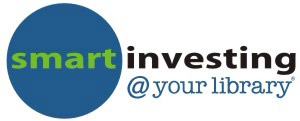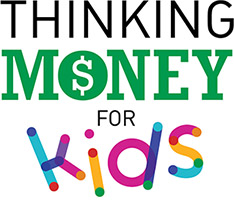Application Instructions
Purpose: This grant program supports public libraries and academic libraries in their efforts to meet financial and/or investor education needs at the community level by providing high-quality education, services, and resources.
Eligibility: Eligibility to apply for this grant is limited to U.S. public libraries and academic libraries at U.S. state or nonprofit higher education institutions. This is a competitive grant program. Submission of a grant application does not guarantee that a grant will be awarded.
Submission: To complete and submit the grant application:
- Save the Application Form using a filename that contains the name of your library.
- Complete all parts of the application. An explanation of each application section is provided below.
- Save a final copy of your application.
- Email the completed application as a Word document to [email protected] using the subject line: "Application from [insert library name]"
You will receive a notification within 72 hours acknowledging receipt of your application. If you do not receive notification, contact Robert Ganem at the FINRA Foundation.
Part One: Cover Page
Project Principal
Provide the contact information for the person who will lead the project, including name, title or position, library name, address, daytime telephone number, and email address. Only one name may be provided. All communications regarding the project will be directed to this individual.Library Information
Provide the name, address, telephone number, nine-digit federal identification number (if applicable), and Web address (if applicable) of the library applying for funding.If the library wishes to identify a 501(c)(3) organization (such as a library foundation or friends of the library group) to serve as fiscal agent for the grant, please provide the relevant details for the 501(c)(3) organization.
Project Title
Provide a descriptive name for the project in ten or fewer words.Amount Requested
Specify the dollar amount of grant funding requested. The maximum grant request is $50,000. Applicants should consider the scope of the proposed project and the population served when determining the amount of grant funding requested.Project Duration
Indicate the duration of the project in number of months, usually between 12 and 24 months.Project Summary
Summarize the project using only the space that remains on the cover page.
Part Two: Qualifications
By submitting this application, the applicant represents that the proposed Project Principal has not been convicted or found in violation of any state or federal securities laws, has not been enjoined or sanctioned by any regulatory authority for those types of violations, and is not named as a defendant in any pending federal action alleging securities laws violations.
Limit to one page or less.
Qualifications of the applicant library
Briefly describe the library’s infrastructure and the resources available to support the successful completion of the proposed project, including branch facilities, technology, and existing collections.Qualifications of the project principal
Identify the project principal and explain why this person is qualified to lead the project.Qualifications of the project team
Identify the key individuals who will serve on the project team and summarize their qualifications. For team members who are not affiliated with the applicant library, such as subcontractors, partners, or consultants, please summarize their affiliations.
Part Three: Detailed Project Description
Limit to five pages or less.
In shaping your project, be creative, think carefully about how best to reach out to and engage the target audience, maximize the use of available technology, and take advantage of partnerships with other organizations and agencies. The application review process will favor innovative and sustainable approaches to financial education.
Project Description and Rationale
This is your opportunity to describe the proposed project in detail.
- Explain the strategies, activities, and staff training comprising the project. Why have you adopted this approach?
- Describe how the project meets the financial capability needs of library patrons.
- Explain how the project will help ensure the financial inclusion of underserved audiences.
- Describe how you will use the FINRA Foundation’s online staff training courses for librarians in your project. These courses are available at no cost.
- Describe how you plan to use available technology to help ensure convenient, timely, high-quality access to financial and/or investor education for library patrons. Grant funds may not be used to purchase computer hardware but may be used to make modest software purchases directly related to project implementation. Applicants are strongly encouraged to maximize the use of their existing technology infrastructure.
- Briefly explain your plan for ensuring continuity of the proposed grant-funded activities and services in the event that social distancing becomes necessary.
- Describe how the project will be sustained following the conclusion of the grant term.
Target Audience
Describe the target population whose financial capability will be addressed by the project. Include the estimated number to be served and relevant demographic information.Goals and Outcomes
State up to four goals that indicate how the target audience(s) will benefit from the project. Think carefully about the changes you want to accomplish with this project and what you need to do to achieve them. At least one of the project goals should relate to your marketing and outreach plan (see below). For each goal, provide up to three measurable outcomes to serve as indicators of the completeness and success of the project. They should be:
- Consistent with the identified needs of the target population
- Aligned with the strategies and activities incorporated into your workplan
- Included in your evaluation plan (see below)
Part Four: Marketing and Outreach Plan
Limit to two pages or less.
The quality of the project marketing and outreach plan will be a major factor in funding decisions. Please describe how you will engage the target audience. Your plan should be proactive: Rather than waiting for patrons to visit the library to access resources, the project would be well served by also establishing a presence at key community locations, events, and virtual spaces outside the library. Be certain to budget adequate funds for the marketing and outreach plan and to rely on the resources available through partnering organizations and agencies. In crafting your marketing and outreach plan, carefully consider:
Communication Strategies
Describe the communication and outreach strategies and vehicles you will use to keep the target audience informed and engaged. Why do you believe these will be effective?Financial Inclusion
Describe how your marketing and communications efforts will ensure inclusive participation in the proposed activities and services.Technology
How will you use technology to maximize the effectiveness of marketing and outreach efforts?
Part Five: Evaluation Plan
Limit to two pages or less.
Describe your evaluation plan. The plan should be both formative, to ensure continuous improvement in the quality of implementation during the project, and summative, to measure progress toward achieving your stated goals. The evaluation plan should encompass all aspects of your project, including your marketing and outreach efforts. Describe the types of data you will use to measure project outcomes, and indicate who will collect these data and how they will be analyzed. Remember, the goals and outcomes you have identified (see above) must be part of your evaluation plan. Consider using a third-party evaluation expert.
Part Six: Project Partners
Limit to one page or less.
Describe your partners and the roles each will play in the project. Applicants are strongly encouraged to engage partners to help achieve marketing, outreach, and other programmatic goals. Partners may include nonprofit or for-profit organizations, government agencies, and other libraries. Partners may not include securities firms, securities trade associations, banks, or other financial firms. Prior to submitting an application, be sure to inform partnering organizations of the project details and obtain their commitment to participate.
Part Seven: Timeline
Limit to two pages or less.
Provide a timeline that includes a start date, the dates of major activities and milestones, and an end date for the grant project. Please give careful consideration to your timeline and make certain it is feasible.
Part Eight: Budget and Budget Narrative
Limit to two pages or less. The maximum grant request is $50,000.
Provide a line-item budget for the project, including explanations of how the line items are calculated. If more than one funding source is involved with the project, identify the other funding sources, the amounts they will fund, and the line items included in their funding.
Grant funds may be used for educational programs, professional development for library staff, marketing, evaluation, outreach activities, materials and supplies relevant to financial education, and other direct financial education services for the target audience(s). Consultants, such as a communications expert to help with marketing efforts or a consultant to help with program evaluation, may be hired. Personnel costs should be clearly indicated by line item. Indirect costs or overhead must not exceed 10% of the other grant expenditures. Collection development costs must not exceed 10% of the grant request.
Budget Narrative
- Summarize the use of funds, as noted in the line item budget, briefly indicating the primary expense categories.
- Explain any personnel costs included in the budget.
- If the amount requested through this grant opportunity is different from the total project budget, explain the difference and specify other funding sources. Indicate which line items are to be funded through other sources.
- If any part of the project work will be subcontracted, summarize the use of funds for the subcontracted work.
Restrictions
When preparing your project budget, please note that grant funds may not be used for:
- Computer hardware
- Construction, equipment, or office furniture
- International programs
- Salaries that are already part of the normal operating budget of the applicant library
- Pass-through funding
- Projects with a potential conflict of interest
- Projects with proprietary elements, such as for-profit activities
- Lobbying, political contributions, fund-raising events, or other similar activities designed to influence legislation or intervene in political campaigns
- Donations, endowments, challenge grants, matching funds, and the like
- Direct payments to members of the public (both cash and cash equivalents such as gift cards and savings bonds)
Other restrictions may apply.
Distribution of Grant Funds
Award of grant funding is contingent upon execution of a grant agreement within a reasonable timeframe. In most cases, grants will be disbursed in two equal installments: one-half upon execution of the grant agreement, and one-half near the midpoint of the grant term, provided the grantee makes adequate progress toward achieving the goals of the grant, as determined by the FINRA Investor Education Foundation. The FINRA Investor Education Foundation may alter this formula according to the needs of the particular grant-supported project.
Questions About Your Application?
Please direct inquiries to:
Robert Ganem
FINRA Investor Education Foundation
[email protected]




